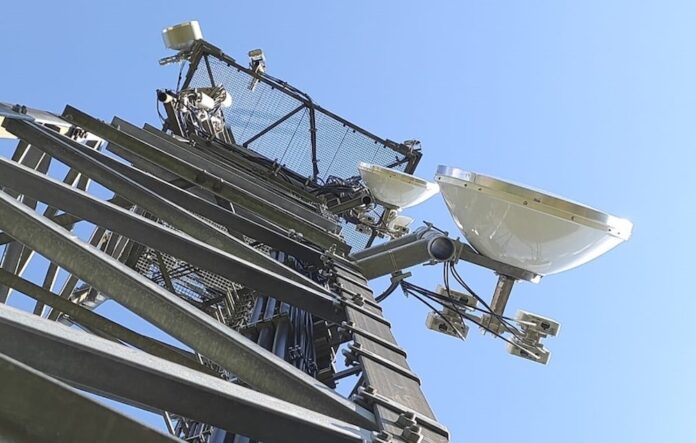Fast wireless data speeds create options for remote regions
Sweden’s Ericsson and Germany’s O2 Telefónica have taken a giant leap for ‘out of town’ 5G building which could save telcos a fortune and expedite the linking of backhaul networks in Europe, the Middle East and Africa. Instead of running fibre optic cable to every base station in ‘the sticks’, suburban and rural 5G networks can now be supported using microwave, thanks to the pioneering discovery by the collaborators. The option to send data at speed over wireless hops of 10 km gives mobile network operators a cheap fast track to building low-latency, reliable broadband in harder-to-reach areas.
Traditionally, the ‘leafy’ areas have been difficult to service, as high capacities rely on broad bandwidths that usually only have been available in millimetre wave frequency bands (E-band). The E-band is more affected by rain than lower frequency bands, which makes it more difficult to deliver consistent service over long distances during adverse weather conditions.
In the demo the collaborators successfully used MIMO (multiple inputs, multiple output) with high modulation in the 112MHz channels which were combined with Carrier Aggregation. MIMO makes efficient use of limited spectrum resources. The resulting union achieved a data capacity close to that of E-band in the lower frequency bands. The backhaul link used the 18GHz frequency band, dual antennas in a MIMO configuration and commercial MINI-LINK radios together with a pre-commercial baseband algorithm that allowed the use of MIMO in 2x 112 MHz channels. The same capacity without MIMO would need a 448 MHz bandwidth in a cross-polar setup.
“A fast 5G network rollout is a priority for us,” said Aysenur Senyer, Director of Transport Networks at O2 Telefónica. “Together with Ericsson, we are pioneering new powerful microwave solutions using Carrier Aggregation and MIMO technology to backhaul 5G traffic over long distances in rural areas, when fibre is not an option. This delivers fibre-like connectivity via microwave and further accelerate our 5G deployment.”
The shift to working from home during the Covid-19 pandemic highlighted the need for fast and reliable connectivity in non-urban environments, according to Ricardo Queirós, Head of Microwave Systems, Business Area Networks, Ericsson. The challenge has been to maintain telecom-grade availability beyond distances of two to three kilometres.
“This joint demo with O2 Telefónica in Germany shows how microwave backhaul can efficiently spread high-performing 5G to regions outside the traditional dense urban areas,” said Queirós, “wireless backhaul has been instrumental to the success of mobile networks and their nationwide coverage. Now it is time to push the boundaries and evolve microwave transmission technology to enable high-performance 5G coverage on a much broader scale.”


